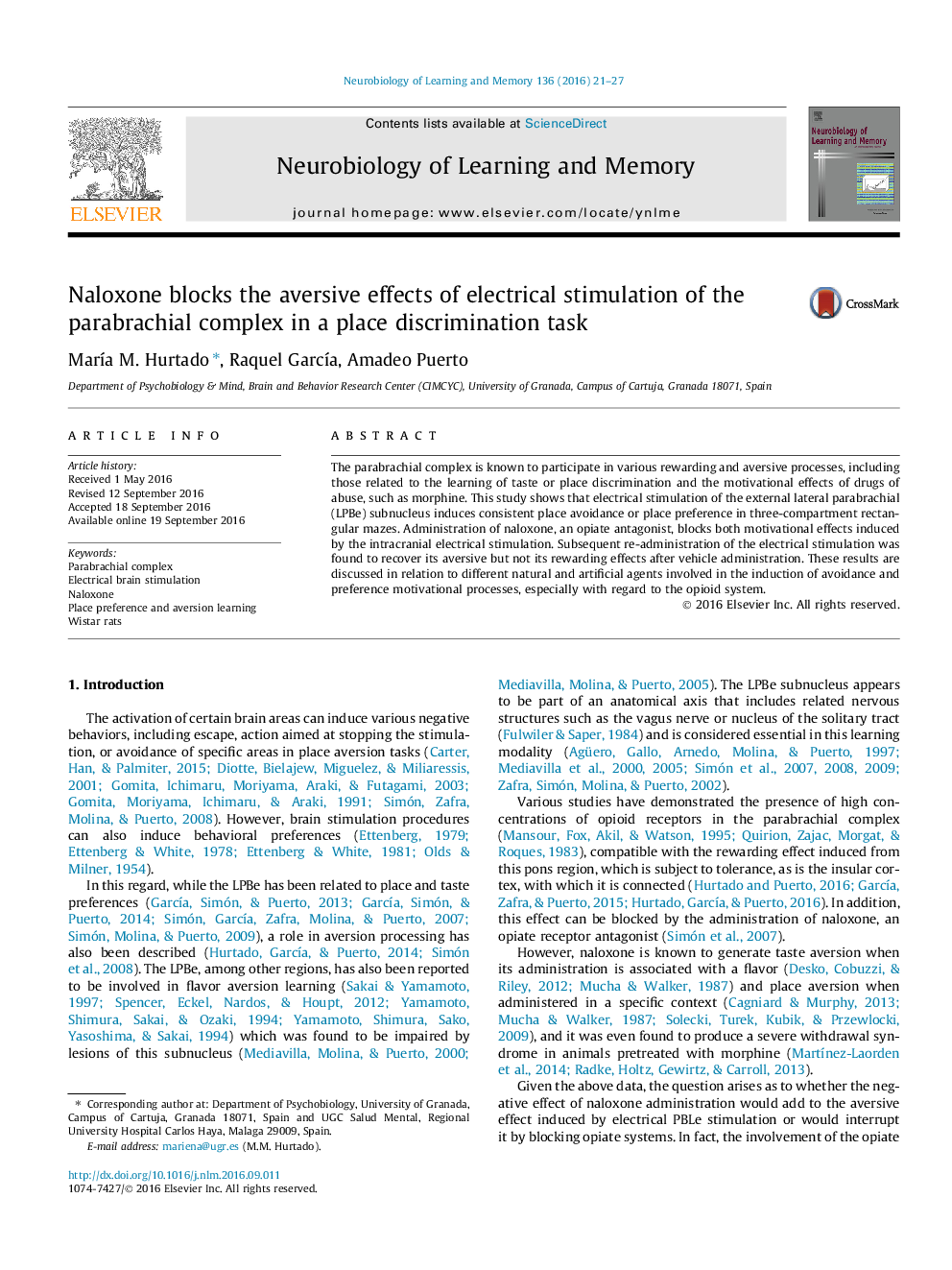| Article ID | Journal | Published Year | Pages | File Type |
|---|---|---|---|---|
| 5043239 | Neurobiology of Learning and Memory | 2016 | 7 Pages |
â¢The Parabrachial complex has been related to aversive and reward behaviors.â¢Stimulation of the external lateral area induces place avoidance or place preferences.â¢Naloxone, an opioid antagonist, blocks both motivational effects.â¢A subsequent stimulation, after vehicle administration, recovers the aversive effect.â¢These results are related to other aversion and reward-inducing agents.
The parabrachial complex is known to participate in various rewarding and aversive processes, including those related to the learning of taste or place discrimination and the motivational effects of drugs of abuse, such as morphine. This study shows that electrical stimulation of the external lateral parabrachial (LPBe) subnucleus induces consistent place avoidance or place preference in three-compartment rectangular mazes. Administration of naloxone, an opiate antagonist, blocks both motivational effects induced by the intracranial electrical stimulation. Subsequent re-administration of the electrical stimulation was found to recover its aversive but not its rewarding effects after vehicle administration. These results are discussed in relation to different natural and artificial agents involved in the induction of avoidance and preference motivational processes, especially with regard to the opioid system.
